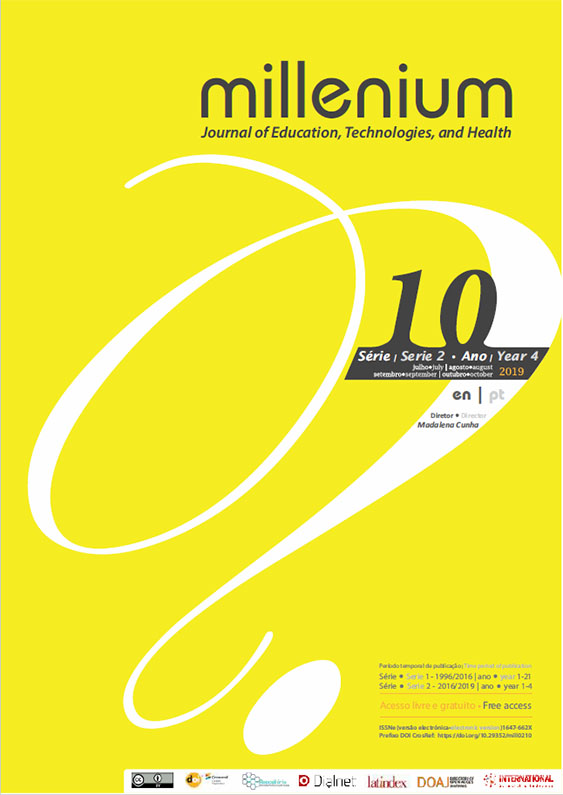Artificial intelligence for healthcare and rescuing technology: technical developments and thoughts about employment impacts
DOI:
https://doi.org/10.29352/mill0210.08.00237Keywords:
Artificial intelligence, Robotics, Healthcare, Rescuing, Work OrganizationAbstract
Introduction: To evaluate the overall impact of Artificial Intelligence (AI) and Robotics on employment and work organization is complicated by the fact that these technologies are expected to revolutionize many application fields, which are very different from each other. In this paper, we consider two specific applications emerging from recent research projects: one applies AI and Robotics technologies to the healthcare sector, and one to Search and Rescue in wilderness areas. We generalize from these case studies to speculate on how this kind of innovative applications, that are likely to become increasingly common and widespread, might impact employment and work organization in general.
Objectives: To understand how innovative applications might impact employment and work organization in general and specifically on healthcare and social services.
Methods: Two recent research developments based on the use of Artificial Intelligence (AI) in the fields of healthcare and rescuing, respectively, are discussed. Therefore, our research work and main results have been achieved within a Swiss National Science Foundation project and a simplified view of the innovative classification component of the architecture is presented.
Results: AI and Robotics technologies have specific application on healthcare and social services and demand new professional skills to manage those new methods.
Conclusions: We conclude that, depending on the application field, a reduction in the workforce required to carry out tasks that will be taken over by automation might be counterbalanced by either a drastic increase in demand (healthcare services), or a shift in the required competences/skills (search and rescue); in both cases, we can expect a positive societal impact, also motivated by an increased standard of service.
Downloads
References
ALMA: Ageing without Losing Mobility and Autonomy. (2013) Retrieved from: http://www.aal-europe.eu/projects/alma/
Nordlander, T. E., Lamorgese, L., Nguyen, T. V. L. & Montemanni, R. (2016). Homecare planning, a challenging task in a growing market. Lecture Notes. In Sheibani, K. et al (eds) Management Science. 8. ORLab Analytics. 86–92.
Giusti, A., Guzzi, J., Ciresan, D., He, F.-L., Rodriguez, J. P., Fontana, F., Faessler, M., Forster, C., Schmidhuber, J., Di
Caro, G. A., Scaramuzza, D., Gambardella, L. M. (2016). A Machine Learning Approach to Visual Perception of Forest Trails for Mobile Robots. In IEEE Robotics and Automation Letters. 1(2), 661—667.
Giusti, A., Guzzi, J., Ciresan, D., He, F.-L., Rodriguez, J. P., Di Caro, G. A., Schmidhuber, J., Fontana, F., Faessler, M., Forster, C., Scaramuzza, D., Gambardella, L. M. (2016). On the Visual Perception of Forest Trails. Retrieved from: http://people.idsia.ch/ ̃giusti/forest/
SWARMIX: Synergistic Interactions in Swarms of Heterogenous Agents. (2013). The Swiss National Science Foundation. Retrieved from: http://swarmix.org
Downloads
Published
How to Cite
Issue
Section
License
Authors who submit proposals for this journal agree to the following terms:
a) Articles are published under the Licença Creative Commons (CC BY 4.0), in full open-access, without any cost or fees of any kind to the author or the reader;
b) The authors retain copyright and grant the journal right of first publication, allowing the free sharing of work, provided it is correctly attributed the authorship and initial publication in this journal;
c) The authors are permitted to take on additional contracts separately for non-exclusive distribution of the version of the work published in this journal (eg, post it to an institutional repository or as a book), with an acknowledgment of its initial publication in this journal;
d) Authors are permitted and encouraged to publish and distribute their work online (eg, in institutional repositories or on their website) as it can lead to productive exchanges, as well as increase the impact and citation of published work
Documents required for submission
Article template (Editable format)





